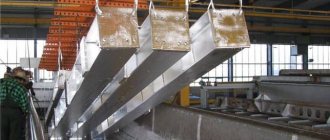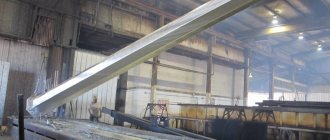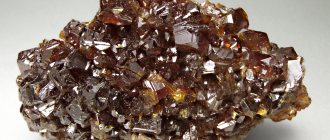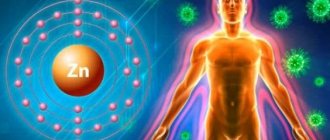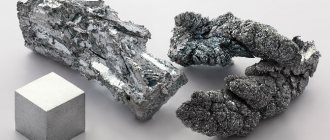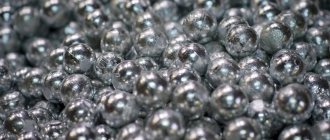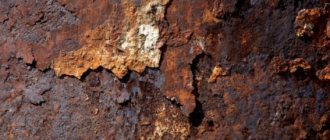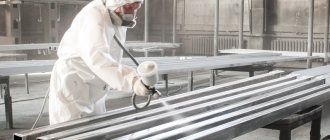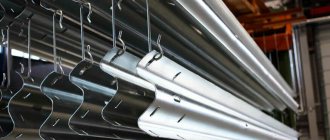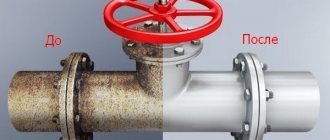In the 4th millennium BC. e. man first became acquainted with metal nuggets. Later he learned how to process it and make tools for solving everyday problems and weapons. Since then, people have continued to learn and improve in the methods of mining and processing metals. Zinc and zinc alloy played a key role in history.
Zinc alloy
Properties of zinc alloys
To understand what properties zinc alloys should have, you need to know the characteristics of zinc. The casting qualities, melting point, hardness and other parameters of this compound depend on the chemical and physical properties of zinc. It is a bluish metal. This substance is not found in natural deposits in its pure form. During long-term processing, zinc oxide is obtained, from which pure metal can be obtained.
Characteristics and properties of zinc
Before describing zinc alloys and their use in various areas of production, it is necessary to understand the properties of zinc.
Chemical properties:
- When heated for a long time, it can react with H2O and hydrogen sulfide. In its process, hydrogen is released.
- Does not come into contact with carbon and nitrogen.
- Mixes with various non-metals - oxygen, phosphorus and sulfur.
- When combined with alkalis, zincates are formed (these are salts of zinc acid).
- When a metal is mixed with sulfuric acid, various substances can form. It all depends on the amount of acid.
- At very high temperatures, the metal can come into contact with various gases (iodine in gaseous state, chlorine and fluorine).
Physical properties:
- It is a durable metal. When heated to 100–150°C, it becomes plastic. When heated to more than 210 °C, the metal changes its shape. Compared to other metals, zinc melts at a low temperature.
- It has good thermal conductivity - 116 W/m K.
- The material boils at a temperature of 906°C.
- Density - 7.133 g/cm3
- Melting of the material - 419°C.
- Maximum tensile strength is 200–250 MN/m2.
- The specific heat of evaporation is 114.8 KJ/mol.
The amount of impurities in the metal directly depends on the method of extraction, processing and the original type of the material. Common impurities found in zinc are nickel, fluorine, chlorine and lead.
Lead and zinc are called an inseparable pair. Although lead is an impurity contained in zinc, they are not found together very often in deposits. A large amount of lead contained in the original material worsens its properties. Intergranular corrosion develops faster. To remove impurities of foreign metals, the distillation method is used.
Raw metal
How do impurities change the properties of zinc
Foreign impurities contained in zinc worsen the characteristics of this metal (at high contents). The primary goal of manufacturers is to reduce the amount of lead, cadmium and tin in this metal to avoid intercrystalline corrosion.
Impact of impurities on zinc:
- Lead - increases the solubility of the metal in water.
- Copper - worsens the ductility index. The metal becomes more vulnerable to corrosion, but its strength improves.
- Arsenic - impairs the strength and ductility of zinc even at a minimum content.
- Tin - increases the fragility of finished castings.
- Cadmium - reduces the ductility of the metal.
- Antimony - in the process of rolling at high temperatures, increases the strength and worsens the ductility of zinc.
Almost all impurities are considered harmful to finished products. Because of this, manufacturers first carry out a series of procedures to ensure that the zinc content in the finished casting is as high as possible.
Dangerous zinc impurities
It is necessary to separate zinc from impurities not only because of their effect on the working qualities of the metal, but also because many of them are harmful to humans.
Most often, zinc-containing ores contain impurities of the following metals:
- tin,
- cadmium,
- lead,
- iron,
- copper,
- arsenic,
- antimony.
The presence of most of these impurities makes zinc castings more durable, but negatively affects their ductility, resistance to corrosion and makes them more brittle and brittle.
- The presence of tin makes the alloy too brittle;
- The presence of cadmium reduces ductility;
- Lead promotes dissolution in acids;
- Iron inclusions make the alloy harder, but make the alloy less strong and complicate the melting process;
- The presence of copper also makes the alloy harder, but on the contrary improves the quality of casting, although it reduces ductility and resistance to corrosion;
- The presence of arsenic makes the alloy more brittle and less ductile;
- When a zinc alloy with an admixture of antimony is heated, the edges of the casting crack and the ductility decreases.
Types of alloys
As technology developed, various zinc alloys emerged. The combination of two metals can be much better in performance than pure raw materials, refined and melted into blanks. Let's talk about the most famous alloys of zinc with other metals.
Copper and zinc
A derivative mixture of copper and zinc is brass. The alloy has been known since ancient times. It was originally made by smelting zinc ore and copper. In the 18th century An alloy with the addition of metallic zinc was first produced. There are 3 types of brass:
- Green - 60% copper.
- Golden - 75% copper.
- Yellow - 67% copper.
In the past, brass was used to make coins and jewelry.
Steel and zinc
Everyone knows galvanized steel. It can be found in any apartment or workplace. It is unreasonable to call this mixture an alloy. A layer of zinc coating is applied to the steel sheet. At a temperature of 400°C, liquid zinc is applied to the steel surface. At this temperature, the atoms of the two metals are tightly bonded to each other and form an iron-zinc alloy. Galvanized surfaces do not rust.
Tin and zinc
An alloy of tin and zinc is popular in the electrical industry. Due to its high heat capacity, this alloy was used in the manufacture of vessels for storing liquids. Drinks remained warm for a long time.
Aluminum and zinc
Alloys of aluminum and zinc with the addition of other metals are used in foundries. The resulting mixture has good casting parameters due to its low melting point.
Melting metal
Hot galvanizing
Hot zinc coating is carried out in accordance with GOST 9.307-89 “EZSKS, Hot zinc coatings.
General requirements and control methods." Extract from GOST 9.307-89 (clause 2. Coating requirements): 2.1. Appearance of the coating
2.1.1. Upon external inspection, the surface of the zinc coating should be smooth or rough, the coating should be continuous. The color of the coating ranges from shiny silver to matte dark gray.
2.1.2. There should be no cracks, nicks, or swelling on the surface of the products.
2.1.3. The presence of zinc deposits is unacceptable if they interfere with assembly. Grains of hartzink with a diameter of no more than 2 mm, surface rippling, light gray spots and tarnished colors, scratches, scratches, traces of being caught by lifting devices without coating to the base metal are not defects.
Restoration of uncovered areas is acceptable if they are no wider than 2 cm and constitute no more than 2% of the total surface area. Uncoated areas are protected with a layer of zinc-containing paint coating (minimum thickness 90 microns, mass fraction of zinc in the dry film 80%-85%) or thermal spraying of zinc (minimum thickness 120 microns).
Application
Nowadays, the use of zinc alloys with other metals can be seen in various industries.
To protect metals from corrosion
To protect other metals from corrosion, a clean material is used to cover the vulnerable surface. The coating process is called metallization.
In the automotive industry
Zinc and alloys containing it have gained great popularity in the automotive industry. Mixtures of metals are used for decorative coating of individual elements of the car (handles, bumpers, grilles, mirrors). Gear mechanisms, lever mechanisms, tires, batteries contain this substance.
In the production of jewelry
Costume jewelry and decorations made of zinc alloys have been known for a long time. Zinc is often mixed with gold. This metal is also used to make white gold. It brightens the finished product.
In construction
Alloys of zinc and other metals are widely used in construction. For example, they are used in the production of roofing. Not only the roofing covering is made from galvanization, but also various pipes, gutters, wind strips, and lining for roof overhangs.
In medicine
When it comes to medicine, zinc oxide is often used as an antiseptic. It is also added to formulations used to accelerate regeneration.
Use of zinc in medicine
Metal galvanizing methods
There are several methods of galvanizing metal, which have their own characteristics. The chosen method significantly influences, to one degree or another, the result obtained, since, depending on the scope of use of metal products and structures, it is not economically profitable to use all galvanizing technologies.
Galvanizing methods differ in the following properties:
Thickness of protective coating
— if for large metal structures the larger the layer of protection, the better, then for high-precision small parts it is necessary to use galvanizing, in which you can select and control the thickness of the anti-corrosion coating. Not every technology allows this to be realized.
Uniform thickness of galvanizing
- again, the smaller and more precise the metal part, the higher the requirements for the protective coating applied to it. For example, for a power line support, it does not matter how evenly it is covered with zinc, while for parts with holes, threads and chamfers, the uniformity of the zinc layer is extremely important.
Strength of retention of the protective coating on metal
— this parameter strongly depends on the method by which galvanizing was performed. So, for example, with hot zinc discussed below, it not only covers the surface of the product, but also connects with it at the molecular level, which significantly increases the strength of the protection on the metal.
Appearance of a galvanized part
— depending on the technology used, the surface layer of zinc oxide can be matte, glossy, and also vary in shades from dark gray to bluish.
Resistant to mechanical damage
— the higher this parameter, the longer the protection will last on products that are subjected to certain physical stress and aggressive factors.
Self-healing ability
- this ability depends on the thickness of the zinc deposited on the metal and the nature of the operation of the structure or product.
Corrosion resistance
- is a general property of a processed product, which consists of a combination of several factors. In particular, the resistance of a galvanized part to corrosion depends on the thickness of the zinc layer, its uniformity, retention strength, as well as resistance to mechanical damage and self-healing ability.
In modern industry, the most common galvanizing technologies are:
Hot
- performed by immersing the workpiece in molten zinc.
Cold
- carried out in absolute analogy with conventional painting by hand or by spraying.
Galvanic
— is implemented by immersing the workpieces in a zinc-containing electrolyte through which an electric current is passed.
Thermal diffusion
— a layer of protective coating is formed when the workpiece is placed in an environment saturated with powdered zinc.
Gas-thermal
— a gas burner is directed to the workpiece and zinc wire or zinc powder is supplied to the spot of greatest heating.
Let's look at the main advantages, disadvantages and hot-dip galvanizing technology
How alloys are made
Before understanding the production of alloys, it is necessary to understand how pure metal is obtained. The most famous method is distillation. First of all, the concentrated composition is fired. It is then heated until a grainy texture is achieved. After this, the concentrated substance is reduced with the help of coal when heated to 1300°C. The vapors produced in this process are condensed and poured into molds. Next, the liquid metal settles at a temperature of 500°C. Lead and iron come out of it. After the distillation process, the material obtained is 98–99% pure.
There is also a more complex and expensive processing method - rectification. During this process, heat exchange occurs between liquid and steam. Heat exchange separates mixtures and eliminates impurities. The output is material with a purity of 99–99.9%.
There is another method for producing pure material - electrolytic. After roasting the concentrate, it is treated with sulfuric acid. The resulting substance is purified from impurities and undergoes the process of electrolysis (produced in lead baths). The metal remains in the baths, which is melted using induction furnaces. The resulting material is 99.95% pure.
Once pure material is obtained, it is melted. Other substances are added to the liquid metal to improve its technical characteristics. The better the metal is heated, the better it will fill the molds.
Zinc alloys are used in various industries, jewelry making and medicine (oxide). Galvanized sheets and materials made from them are popular in construction. When purchasing an alloy, it is important to clarify the lead and nickel content in its composition. These 2 substances are harmful to human health.
Technological cycle of hot-dip galvanizing
A complete hot-dip galvanizing process includes the following technological steps:
Loading of products requiring processing to the hanging area
. Since the method under consideration is one of the few that allows galvanizing relatively large parts, shipment is usually carried out using special overhead cranes.
Hanging metal structures
. For subsequent processing, parts delivered to production are hung on movable crossheads. Metal structures are distributed and fixed in such a way that the entire section can fit into technological containers at further stages. It is also important to hang the products so that they can come into contact with the liquids in which they will be immersed over the entire surface, without interfering with each other.
Pre-treatment of metal structures.
Before hot galvanizing, steel products undergo mandatory multi-stage preparation. It consists of alternately immersing a traverse with suspended parts in baths with process fluids. Including, in these baths, degreasing, cleaning, etching (which ensures the penetration of zinc into the crystal lattice of the metal), removal of traces of acid, and coating with protective flux are carried out. Also at this stage, the metal is preheated before immersion in molten zinc, which avoids deformation of products due to sudden temperature changes.
Drying and preheating
. It is carried out in a special multi-stage oven into which heated and purified air is supplied. As a result, before galvanizing, traces of preliminary preparation in baths of liquids evaporate from metal structures, and they are also heated additionally.
Galvanizing
. The main technological stage of the hot-dip galvanizing process. It is carried out by transporting a traverse with prepared metal products into a furnace closed on all sides, in which a bath of molten zinc is located. Its temperature is maintained at a constant level around +450°C using high-speed gas burners. The sealing of the furnace is necessary for two reasons.
Firstly, this is necessary to ensure the safety of people who work in production. Secondly, during the galvanizing process, gases heated to a high temperature are released, which need to be purified before being released into the atmosphere. In addition, the thermal energy of these gases is used again to heat process fluids at the stage of preliminary preparation of metal products.
Removal, sorting and shipment of galvanized metal structures
. Upon completion of the galvanizing process in a bath of molten zinc, the traverse with hanging products is automatically sent to the area for their removal and sorting, after which the metal structures are loaded onto transport for shipment to the customer.
Despite the apparent complexity of the described process, the hot-dip galvanizing method is one of the simplest and most cost-effective. In addition, thanks to the introduction of certain technological stages, it is possible to ultimately obtain anti-corrosion protection with numerous advantages compared to other galvanizing methods.

